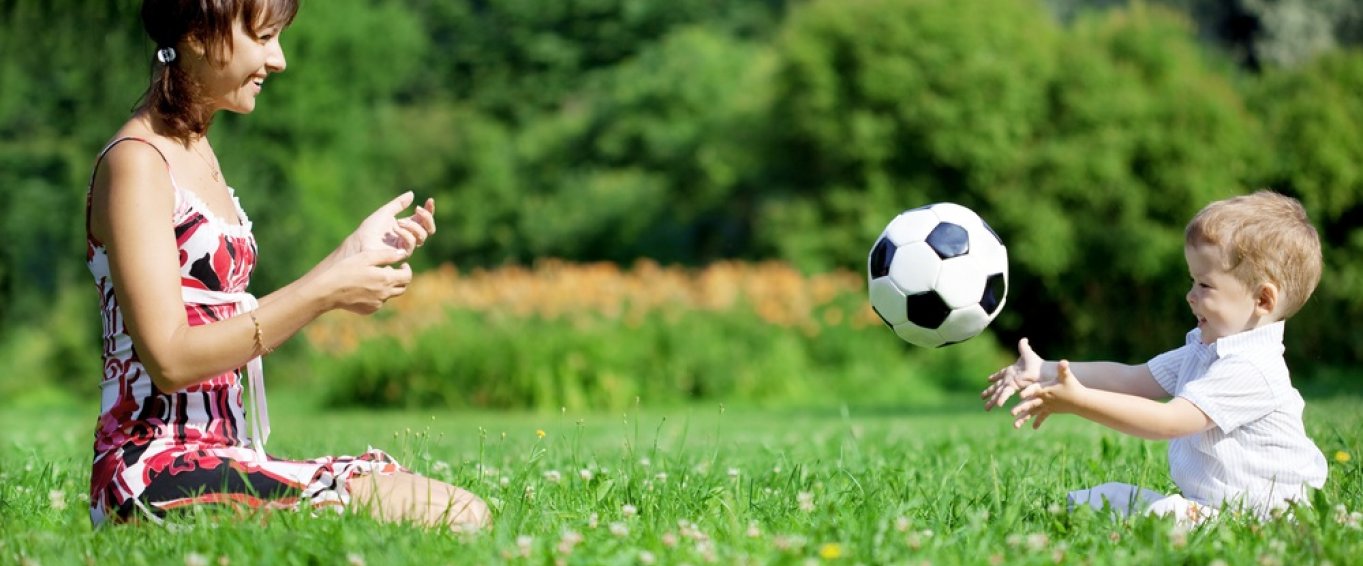Move It! Why Playing Catch Makes Kids Clever!

We bet you catch something nearly every day (besides winter colds from pupils). It might be a pen tossed across the staffroom. Or, a mug knocked from a table. It could be a tricky pass at Sunday cricket. The point is, we make catches all the time. It's so common we barely notice.
But it hasn't always been this way. Catching is a skill most learn at around the age of three. And it takes a lot of practice.
You might be surprised to know catching a ball requires all four lobes of the brain. Therefore, children who catch skilfully can be said to demonstrate high levels of cognitive efficiency. As a cognitively complex movement, catching is linked to brain efficiency. It's not just a symptom of higher thinking, it enables it. Read our blog on active learning to find out more.
Every time the lobes of the brain 'speak' to one another to ensure a successful catch, the pathways between them get smoother. These pathways are used for many other tasks. The more kids practise, the better they get at all kinds of learning (including schoolwork).
Let's take a closer look at the relationship between ball skills and brain activation:
Step One - Analysing the Object
The child uses their OCCIPITAL LOBE to analyse the object heading towards them. It looks at details like colour, clarity and contrast.
Step Two - Identifying the Object
Using data from the OCCIPITAL LOBE the TEMPORAL LOBE identifies the object. It's a tennis ball and it's coming in fast!
Step Three - Interpreting the Object's Form
The child uses their PARIETAL LOBE to figure out the size, shape and location of the ball. To do this, they need to assess its surroundings. Which bits are part of the ball? Which bits are part of the environment?
Step Four - Identifying Speed & Direction
Using the PARIETAL LOBE again, the child predicts the speed and direction of the ball. It requires some complex calculations. However, their brain works so fast they barely even notice.
Step Five - Deciding Where to Catch
The child uses their FRONTAL LOBE and PARIETAL LOBE to decide where to make the catch. Situational (speed, direction) data gets combined with memory. The frontal lobe uses past catching experiences to predict what will happen this time.
Step Six - Moving to the Right Position
All of the information about the ball is sent to the FRONTAL LOBE. It tells the motor cortex: "Get moving!" aND THE child gets into the right position for a successful catch.
Step Seven - Catching the Ball
The motor cortex in the FRONTAL LOBE tells the body to brace for impact, balance and finally, throw their hands up to catch the ball. Then, if the child is playing a catching game, they get ready to do it all over again!
Using Catching Ability to Assess Cognitive Performance
Children master fundamental movement skills at different speeds. Some are better at running, leaping or throwing than catching. However, it's worth noting that persistent struggles with catching (and other basic movements) can be a symptom of cognitive impairments like autism. Click to read about studies that link autism to motor development delays.
To catch a ball, a child combines visual and motor cues. This ability is also used to interpret social behaviours. We assess and imitate the behaviours of those around us to show we understand social situations. As the ability is impaired in children with autism, they may find both socialising and catching a challenge. It's just one of the reasons primary schools should regularly assess pupils' catching and object manipulation skills.
Amaven Healthy Schools, use Movement of the Day to help pupils develop fundamental movement skills! Log into your portal to pick a video.